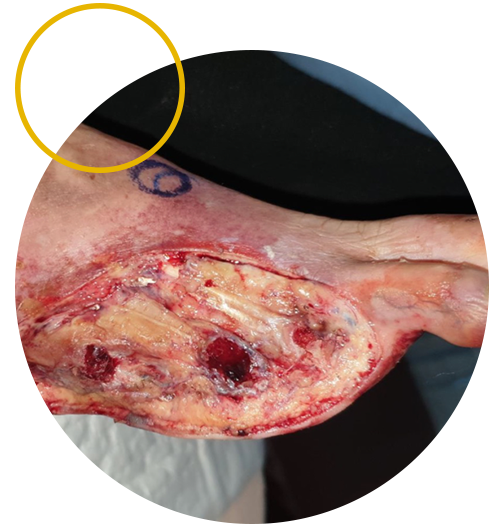A diabetic foot ulcer is an open sore or wound that occurs in approximately 15 percent of patients with diabetes and is commonly located on the bottom of the foot. People who use insulin are at higher risk of developing a foot ulcer, as are patients with diabetes-related kidney, eye, and heart disease. Being overweight and using alcohol and tobacco also play a role in the development of foot ulcers.

Risks
Risks are higher for those with neuropathy, poor circulation like a foot deformity (bunions or hammer toe), smoking and uncontrolled blood sugar. The condition can be exacerbated by wearing inappropriate shoes.
Causes
Patients who have diabetes for many years can have a reduced or complete lack of ability to feel pain in the feet. The nerve damage often can occur without pain, and one may not even be aware of the problem.
Wound Care
In caring for Diabetic Foot Ulcers it is important to prevent infection. Care of the wound would include an array of methods including taking the pressure off the area, removing dead skin and tissue, applying medication or dressings to the ulcer, as well as managing blood glucose and other health problems.